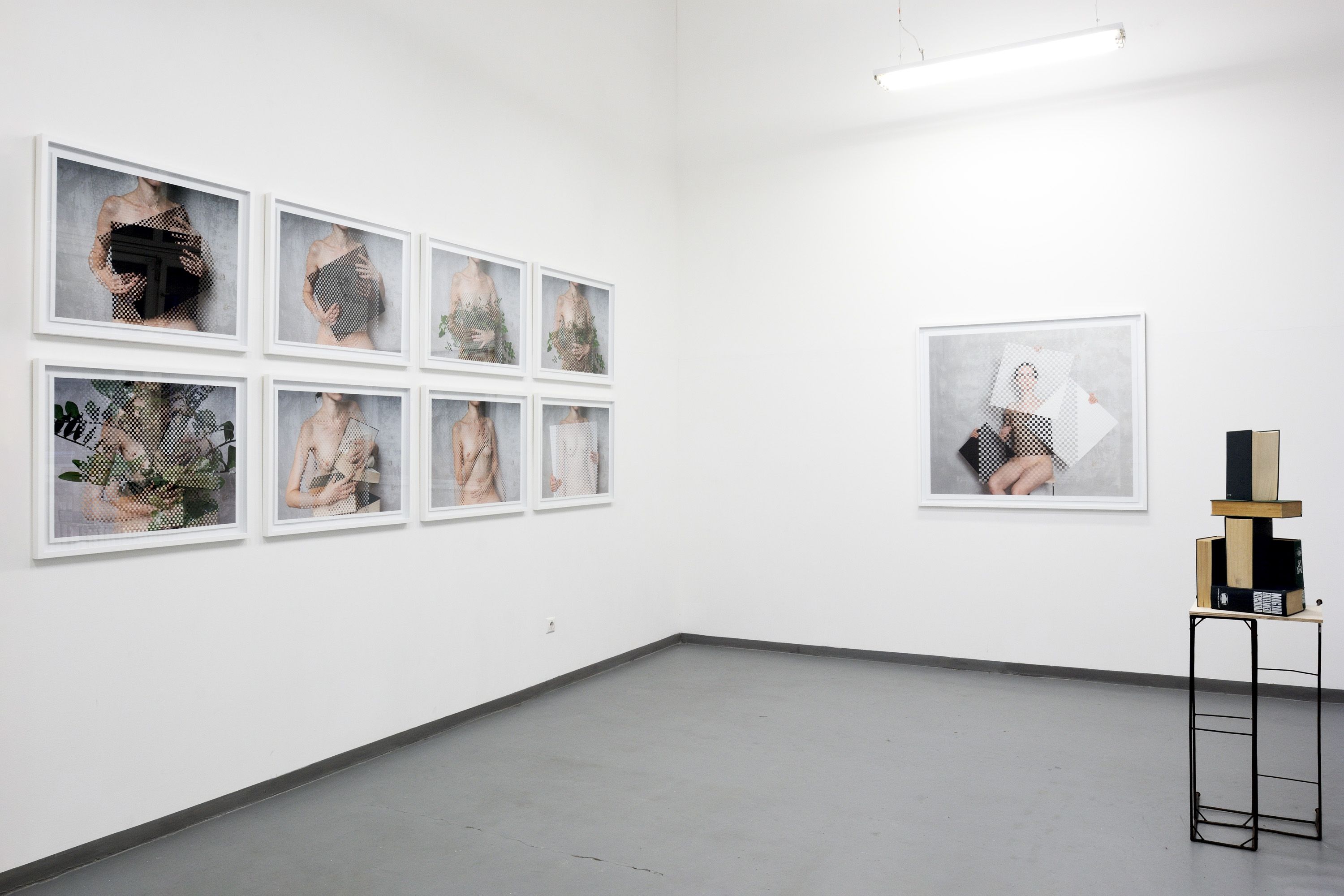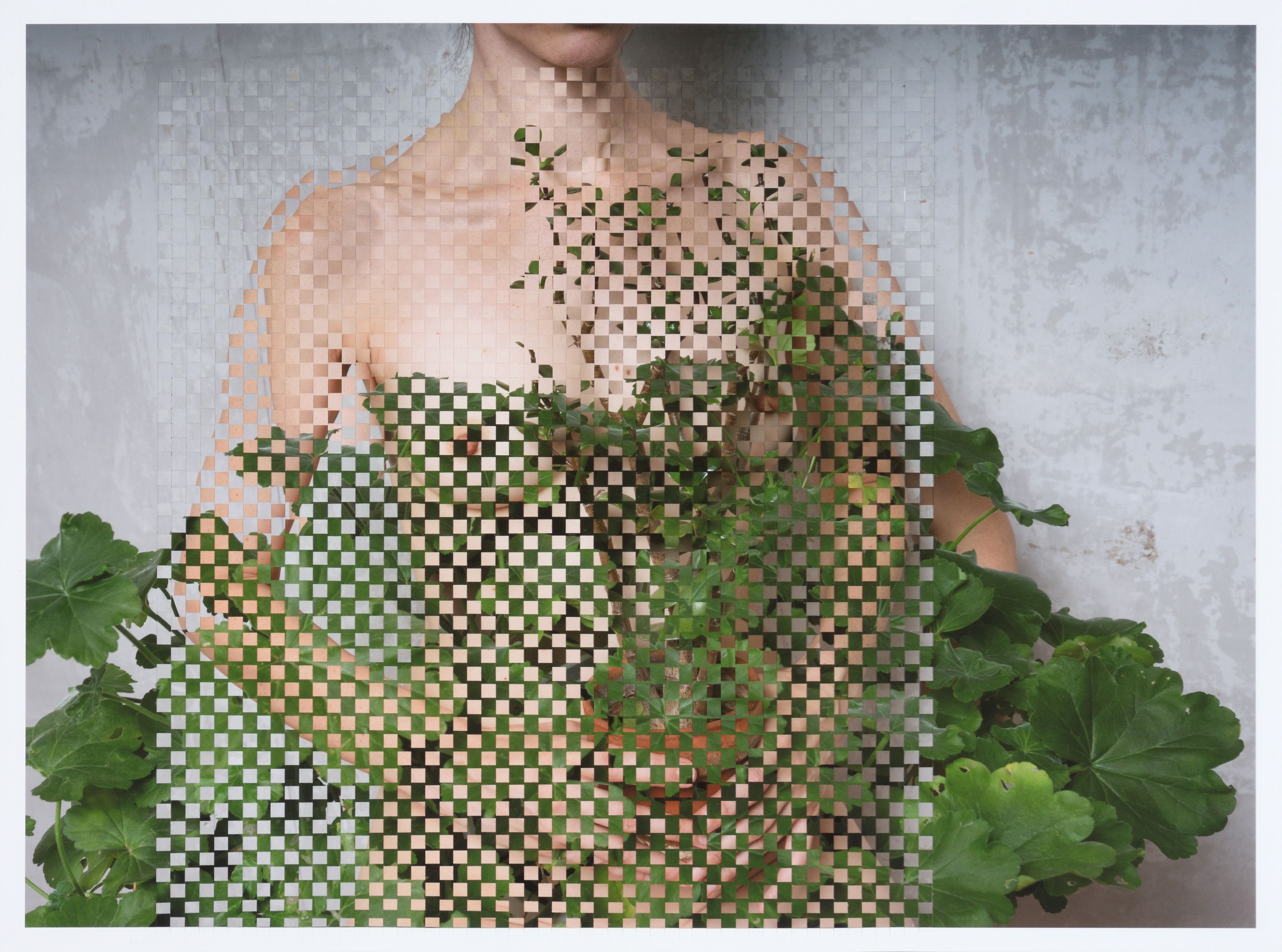Hajnalka Tarr
Object Relations
| Venue: | acb Attachment |
| Date: | Nov 30 2018 – Feb 01, 2019 |
Description
Hajnalka Tarr has been interested in the visual manifestation of reality since the beginnings of her artistic practice. From her drawings, installations and photo-based works unfolds the fundamental desire for a tangible truth, which, in turn, is constantly confronted with the emotionally affected reality of the conscious mind. The comforting laws of physics are time and again overwritten by psychology, by the ever-changing private reality.
In her latest photo series, she uses her relation to objects to define her place in the visual, logical order created by her. The artist herself is the central motif of the pieces constructed by a fixed structural logic. As one of the most obvious forms of self-representation, the nude is augmented by an array of objects from the immediate surroundings of the artist in her series of photographs. Each piece comprises an image of the artist intertwined with the image of an object assigned to it. Examples of similar forms of self-representation as well as the technique of interweaving photographs can be found in her earlier artistic practice. Her series Object Relations is the first instance, however, that the theme of self-interpretation is coupled with the woven format. Although the surfaces slit in the course of weaving loosen up the defined contours, they still project a more authentic image of reality. By deconstructing the subject into its elements, Tarr captures constant change, the constantly changing manifestations of reality. A tension is created between the documentary character of photography as a medium and the lyrical surfaces created by weaving. The varying series of interwoven bodies and objects are at once hermetic and direct.
The wish to get close to reality and the desire for stability are simultaneously articulated by the structural construction of the series. The objects coordinated with the body – black and white plane, plant, dictionary – morph through situations where the two presuppose each other, to eventually reach back into themselves having exhausted all the possible variations. An important new element of the system is the involvement of her own body, and the gesture of rotation. It evokes the performative character of neo-avant-garde practices, wherein the physical presence of the artist is interpreted by the given context. The creator as an immanent part of the creation, the immediate influencer of the series of actions. The dynamically rotating planes of Object Relations evoke certain works of Dóra Maurer, who has had a significant role in the development of Tarr’s career, namely her Reversible and Changeable Phases of Movements (1972-1975), and Seven Twists (1979). In both Maurer’s and Tarr’s case, we can witness the visual manifestation of cognitive processes. While Maurer mainly focuses on the process, in her disciple’s work, the sensual character of the artwork also gains importance.
In Hajnalka Tarr’s art, the intellect ceaselessly seeks to find its way across the labyrinth of emotions. Having emerged in the neo-conceptual environment of the late nineties, Hajnalka Tarr’s sensual creative praxis merges intellectual distance with the claim of self-exposure. Borrowed from psychology, the notion of object relations stands for the manner an individual relates to the world surrounding them, characterised by the same duality. Her series employs the method of systematization to query rationality and the supremacy of the intellect, making more room for a broader spectrum of reality.
The exhibition is supported by NKA

